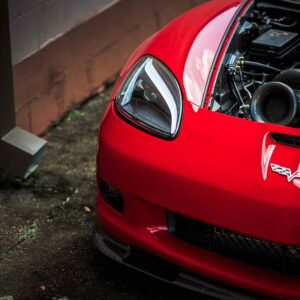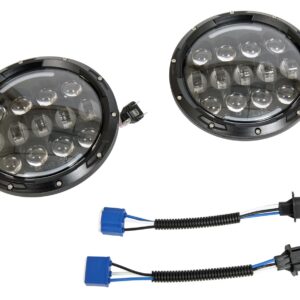About Headlight Assemblies
Headlight assemblies are integral components of a vehicle’s lighting system, providing illumination for safe driving during low-light conditions and at night. They typically consist of several parts, including the housing, bulbs, lenses, reflectors, and electrical connections. Here’s an overview of each component:
- Housing: This is the outer casing that encloses and protects the internal components of the headlight assembly. It’s usually made of durable materials like plastic or metal.
- Bulbs: These are the light sources within the headlight assembly. Common types of bulbs include halogen, LED (Light Emitting Diode), and HID (High-Intensity Discharge). Each type has its own advantages in terms of brightness, energy efficiency, and longevity.
- Lenses: The lenses cover the front of the headlight assembly and serve to protect the bulbs while also focusing and directing the light emitted. They are typically made of polycarbonate or glass and may have special coatings to improve durability and light dispersion.
- Reflectors: Reflectors are found behind the bulbs and help to direct and distribute the light output in a controlled manner. They are designed to maximize the efficiency of the bulbs by reflecting as much light as possible onto the road ahead.
- Electrical Connections: These components include wiring harnesses, connectors, and sockets that facilitate the flow of electricity from the vehicle’s electrical system to the bulbs. Proper electrical connections are essential for the reliable operation of the headlights.
Headlight assemblies come in various designs and configurations to fit different vehicle models and aesthetic preferences. Some vehicles have separate assemblies for low beams and high beams, while others feature integrated units that combine both functions. Additionally, advancements in lighting technology have led to the development of adaptive headlights that can adjust their angle and intensity based on driving conditions and vehicle speed.
Maintaining proper functionality of headlight assemblies is crucial for safe driving, as defective or malfunctioning headlights can reduce visibility and increase the risk of accidents. Regular inspection and replacement of bulbs, lenses, and other components as needed can help ensure optimal performance and road safety.
How to identify headlight assembly?
Identifying a headlight assembly involves recognizing its various components and understanding its design features. Here are some steps to help you identify a headlight assembly:
- Location: Headlight assemblies are typically located at the front of the vehicle, on both the driver’s and passenger’s sides. They are positioned to provide illumination for driving in low-light conditions and at night.
- Shape and Size: Headlight assemblies come in various shapes and sizes, depending on the make and model of the vehicle. They may be round, rectangular, or another shape, and their size can vary based on the design preferences of the manufacturer.
- Components: A headlight assembly consists of several components, including the housing, bulbs, lenses, reflectors, and electrical connections. Look for these parts to help identify the assembly.
- Bulb Type: Different types of headlight bulbs, such as halogen, LED, and HID, can be installed in the assembly. Knowing the type of bulb used can provide additional information about the assembly.
- Manufacturer Logo or Markings: Many headlight assemblies have the manufacturer’s logo or markings stamped on them, which can help identify the brand or supplier.
- Vehicle Compatibility: Headlight assemblies are designed to fit specific vehicle models or series. Checking compatibility with your vehicle’s make, model, and year can help ensure you’re identifying the correct assembly.
- Documentation: If you have access to the vehicle’s manual or specifications, it may provide details about the headlight assembly, including its part number, specifications, and any unique features.
- Online Resources: Websites, forums, and parts catalogs dedicated to automotive accessories and components may offer information and images to help you identify a headlight assembly.
By considering these factors and inspecting the headlight assembly closely, you can effectively identify it and determine its compatibility with your vehicle or replacement needs. If you’re unsure, consulting a professional mechanic or automotive expert can provide further assistance.







